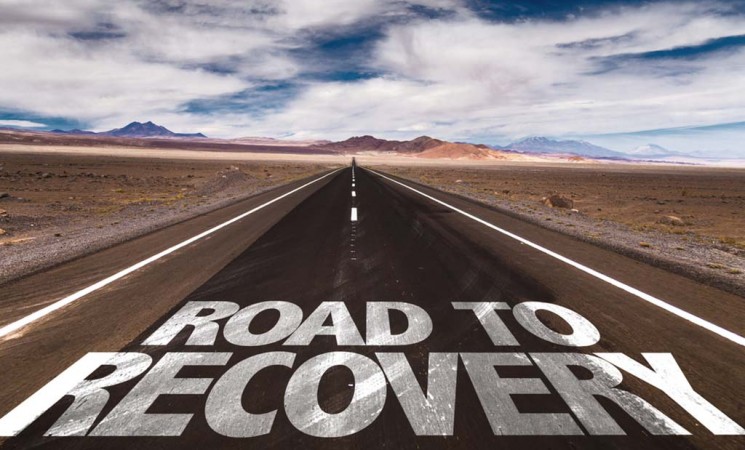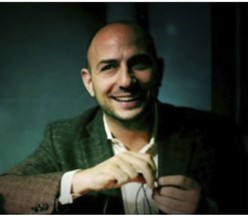Archived Content
This page is archived and provided for historical reference. The content is no longer being updated, and some of the information may have changed over time and could be outdated or inaccurate.

By Carl Lejuez, Ph.D.
The research that we conduct here at the Center for Addictions, Personality, and Emotion Research (CAPER) at the University of Maryland is focused on the underlying determinants of substance use. We study addiction as a process and try to understand the factors that lead into and create addiction, rather than a disorder, which is often seen as a final clinical presentation. We also take information about the causes of substance use and apply it in treatment. This means we are engaging in translational research because we are interested in both understanding those basic processes and applying what we learn in clinical practice.
Understanding Risk-Taking Behavior and Substance Use
There are two processes we focus on that are involved in the creation of an addiction: One is positive reinforcement, and the other is negative reinforcement. Starting with those two basic concepts, we are creating tasks in the laboratory that allow us to isolate those processes.
For positive reinforcement, one such task is the balloon analogue risk task. In this task, we use money on a computerized balloon, where the more you blow up the balloon, the more money you can earn. The problem is, if you blow it up too much, the balloon will break. This task serves as a model for risk-taking and for some of the processes underlying substance use. The task lets us see how a person balances the positives and negatives of risk-taking in terms of trying to obtain something. In this balloon task and in real life, we have come to think of risk-taking on a continuum, where not being risky enough is a problem, but being too risky also is a problem. The laboratory task allows us to see how much risk tolerance someone has.
For negative reinforcement, we have been developing tasks to get at what someone will do to make stress or negative feelings go away. We have started with a concept called distress tolerance. We will stress someone in a really difficult math game or have them trace a star backwards. When the task starts to get impossible, and they can't progress, we examine how long they try to persist in the task. If they don’t persist, that may indicate that they would not persist through other kinds of stress.
We have performed several studies examining how these two concepts—risk taking and stress tolerance—can help us predict when someone will drop out of a drug treatment center. For example, in the same way that for the negative reinforcement task, someone might not be able to tolerate negative feelings, it may be the case that when someone is in drug treatment, they can’t tolerate the difficulties of treatment. The research that we are doing really shows that these individual vulnerabilities are important. Someone’s willingness to take risks, ability to tolerate psychological distress, and impulsive tendencies are really important to understand at a young age. It's also really important to understand how these change over time.
The Clinical Side of Risk-Taking Research
In our lab we tend to focus on substance use–related risks, but it’s a mistake to not consider other risk-taking behaviors. In fact, other risk-taking behaviors may be related to substance use. If a person stops substance use behavior without having addressed the underlying reasons for the substance use, the person may move to other risk-taking behaviors to fill that same functional need. So, while our bread and butter is really substance use, I think we try to not be narrow.
We certainly are interested in how we can apply what we have learned clinically. Specifically, going back to this idea of positive and negative reinforcement, we are interested in not just getting someone to stop using a substance, but also in what else they can do to get some of the same gain they were getting from the substance. Overall, then, the broader context of our work is to not only get someone to stop, but also to learn more about why they were doing it in the first place.
One aspect of our work that ties very well into the mission of the Office of Behavioral and Social Sciences Research is that we try to consider all the determinants of behavior. The resulting treatment programs will tie all of this together and, we hope, be more effective than treatment that looks at only one aspect of addiction or is focused only on getting someone to stop substance use.
It can be easy for people to feel somewhat hopeless in terms of the prognosis for individuals with addiction. But I think the more we can show why these things are happening, the more we can isolate different aspects of addiction, and the more we are able to treat various aspects of addiction in more precise ways, the better we can help individuals be healthier and live a more full and valued life. I think that will have a big impact.
Additional Information
Carl Lejuez’s University of Maryland faculty page.
Dr. Carl Lejuez discusses his research on risk-taking behavior and substance use.
University of Maryland's CAPER
About the Author
 Carl Lejuez, Ph.D.
Carl Lejuez, Ph.D.
Dr. Lejuez is currently a professor and the director of clinical training in the Clinical Psychology Program at the University of Maryland, as well as the founding director of CAPER. He is the founding editor of Personality Disorders: Theory, Research, and Treatment published by the American Psychological Association (APA), and serves on the editorial board of two other APA Journals (Psychology of Addictive Behaviors and Experimental and Clinical Psychopharmacology), as well as Clinical Psychology Review. He currently holds adjunct faculty positions at the Charleston VA (South Carolina) and the Yale Child Study Center. He has most recently taken on the role of associate dean for research in the College of Behavioral and Social Sciences.
Dr. Lejuez’s research is translational in nature applying laboratory methods to understand real world clinical problems, with the goal of using this understanding to develop novel assessment and treatment strategies. His research spans the clinical domains of addictions, personality pathology, and mood disorders, and he is most interested in the common processes across these conditions. His research has been constantly funded by the NIH since his arrival at the University of Maryland in 2001.
Photo Credit: Shutterstock/Gustavo Frazao








